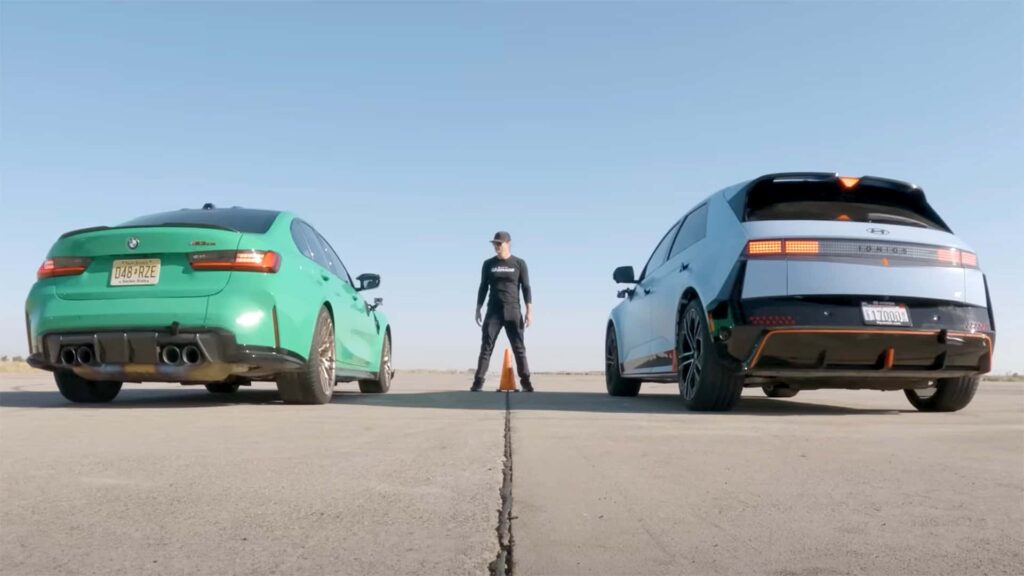While the BMW M3 CS may have won both U-drag races against the Hyundai Ioniq 5 N, it is important to note the impressive performance put on by the Hyundai considering its significantly lower price point. The Ioniq 5 N, with its 601 horsepower that can be temporarily bumped up to 641 hp, showcases the potential of electric vehicles in drag races against traditional combustion engine cars.
The U-drag format utilized by Edmunds adds an exciting element of handling into the mix, as the cars must navigate a 180-degree turn at the quarter-mile mark. This format tests not only the straight-line speed of the vehicles but also their ability to handle corners effectively. The BMW M3 CS demonstrated its superiority both in acceleration and cornering speed, ultimately securing victory in both races against the Hyundai Ioniq 5 N.
Despite the loss, the Hyundai Ioniq 5 N’s instant power delivery and ability to put its power down instantly allowed it to make up ground on the BMW in certain parts of the race. The fake engine noise and gear shifting features may have slightly impacted the Hyundai’s performance, but it still put on a competitive showing against the more expensive BMW.
Ultimately, the BMW M3 CS proved to be the quicker car in both straight-line acceleration and cornering performance. However, the fact that the Hyundai Ioniq 5 N, priced at half the cost of the BMW, was able to keep up with such a high-performance vehicle is a testament to its impressive capabilities. The race between these two cars highlights the advancements in electric vehicle technology and the competitive nature of drag racing between combustion and electric vehicles.
It will be interesting to see how future drag races between electric and combustion vehicles unfold as technology continues to evolve and improve in both sectors. The rivalry between the BMW M3 CS and the Hyundai Ioniq 5 N showcases the exciting potential of performance cars from different powertrains competing on the drag strip.
The recent race featuring the BMW M3 CS was impressive, but it left many wondering if a regular M3 Competition would have been a better choice for a quicker performance. The M3 CS, while more extreme in design, actually has less power and doesn’t launch quite as brutally as its Competition counterpart.
In hindsight, opting for the M3 Competition may have resulted in a faster race time due to its superior power and launch capabilities. The Competition model is known for its impressive performance on the track and its ability to accelerate quickly off the line. With a more powerful engine and better launch control, the M3 Competition could have shaved valuable seconds off the race time.
The decision to use the M3 CS may have been based on its more aggressive styling and track-focused features. However, when it comes to pure speed and performance, the M3 Competition is the better choice. Its combination of power, agility, and precision make it a formidable competitor in any race scenario.
Ultimately, while the M3 CS may have its own unique appeal, it’s clear that in a race situation, the M3 Competition would have been the smarter choice for a quicker and more competitive performance. Its superior power and launch capabilities would have undoubtedly made for a more thrilling and intense race experience.
In conclusion, while the M3 CS may have its own strengths and attributes, when it comes to pure speed and performance on the track, the M3 Competition is the clear winner. Its combination of power, agility, and precision make it a force to be reckoned with in any racing scenario. Next time, it might be wise to opt for the M3 Competition for a faster and more exhilarating race experience.

